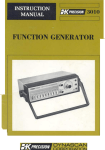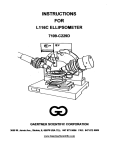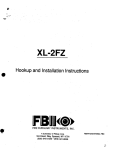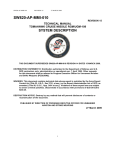Download RTS BP300 Service manual
Transcript
CP-300 & TW-12 Belt-Pack & Interface Two-Wire System INSTRUCTION and SERVICE MANUAL CA) ClearCor®e Intercom systems 1111 17th Street * San Francisco, California 94107 * 415-861-6666 CLEAR-COM 810044 TW/10-84 REV B CLEAR-COM CP-300 BELTPACK STATION & TW-12 TWO-WIRE INTERFACE UNIT OPERATION & SERVICE MANUAL Contents Page # Introduction to the Belt-Pack & Interface...I System Installation .......................... 3 Headsets Interconnect Cable CP-300 in a Single-Channel System CP-300 in a Two-Channel System TW-12 Set-Up Loop-Through Interconnection 6 CP-300 Operating Controls .......... 7 Parts Listings .......... 8 Specifications .......... Illustrations Figure 1: System Interconnection ........... 3 Figure 2: CP-300 Belt-Pack ................. 4 Figure 3: TW-12 Interface .................. 5 9 ........................... CP-300 Schematic . 11 ........................... . TW-12 Schematic CLEAR-CON CP-300 BELT-PACK Operation & Service Manual ADDENDA CP-300 "Call" Signalling (replaces "Optional Signalling" section of Introduction to the Belt-Pack; page 1, column 2) The signalling option for the CP-300 provides a visual alert for users who aren't listening to the intercom. Pressing the CP300's CALL button sends a special call-signalling voltage (either a 20 kHz tone or a positive DC voltage) onto the intercom channel currently in use. This voltage is detected by all other stations which are switched to that channel, causing their call lights to turn on. The 2-channel/1-channel mode-select switch sets the signalling method: a tone for 2-channel or "TWi operation, or DC voltage for single channel (standard Clear-Com) use. The signalling option requires installation of a switch/light button and an additional PC assembly. Headsets (see System Installation, page 3) The headset used with the CP-300 should have a rated mic output level of -55 dBv. CP-300 as a two-wire /two-channel station (see System Installation, page 4) Using the CP-300 as a two-channel station requires connection to a TW-12 Interface Unit OR connection to an existing "TW' (twowire) two-channel intercom system. The CP-300's side panel contains a recessed "mode-select" switch, which must be set to the "2-CH MODE" position (refer to Figure 2 for switch location). CLEAR-COM 810044 TW/5-85 REV B CLEAR-COM CP-300 BELT-PACK STATION & TW-12 INTERFACE UNIT OPERATION MANUAL . 1. INTRODUCTION TO THE BELT-PACK & INTERFACE The Clear-Com CP-300 is a portable belt-pack intercom that allows communication on two channels, using standard two-conductor microphone cable. The CP-300 is different from other Clear-Com Stations because it requires connection to an interface unit, Model TW-12, to utilize its full capabilities. O When the CP-300 is used in its twochannel/two-wire mode, two audio channels are transmitted on one cable: channel A audio and DC power on one of the wires, channel B audio on the other wire. The System must include the TW-12 Interface when two intercom channels are required on one cable. (Clear-Com typically uses one cable to support one audio channel plus power, or it uses multi-pair cable for two or more channels.) The CP-300 features Clear-Com's excellent speech intelligibility in all high- and low-noise environments. It also includes a mic limiter, which holds the output relatively constant over a 30 dB input range. The CP-300 has the same pin-to-pin connections and functions as RTS intercoms (e.g., RTS Model BP-300), with better performance. A unique CP-300 feature is its switch-selectable operation as a two-channel/two-wire station or as a "standard" one-channel Clear-Con station. It operates in a standalone, two-channel system or combined in a system with standard Clear-Com Stations. Refer to the system diagrams, page 3. Other CP-300 features include its "user-friendly" control lay-out, including the rocker switch for channel-selection (A or B), a three-position mic switch (on/off/ momentary on), and a low-profile volume control. The controls are different sizes to facilitate adjustment by touch only. Al I controls are protected by the raised lip of the belt-pack's chassis. Optional Signalling The Visual Signalling function, a typical Clear-Com feature, is configured differently in the CP-300 than it is in standard Clear-Com Stations. The CP-300 uses a 20,000 Hz signal, transmitting it on the audio channel selected for communicating (A or B). This signal is detected by the other CP-300's which are using that same channel (A or B), causing the CP-300 call lamps to light up. When the signalling option is included in the CP-300, a call lamp/ button is added to the belt-pack's chassis. The system of signalling is determined by the one-channel/ two-channel mode switch on the CP300 operation; it switches the signallirg circuitry from DC mode (standard Clear-Com) to the 20k Hz signal used in the 'TW" system. The CP-300's headset amplifier provides power to drive a standard Clear-Com headset to levels greater than 110 dB SPL, without any distortion. The belt-pack operates with either a dynamic or a carbon headset, providing an input connector for each one. The CP-300 also incorporates "automatic headset detection," which mutes the mic pre-amp when the headset is not plugged in. Therefore an unused yet on-line beltpack doesn't cause background noise. (continued) CP-300 and TW-12 Description, continued The belt-pack provides a sidetone adjustment, which allows the user to vary the level of his/her voice (full on to 25 dB null) as heard in the headset. This control need be set just once, if at all, even if other intercom stations join or leave the intercom network. TW-12 The TW-12 Interface connects between the CP-300 Belt-Pack(s) and a standard Clear-Com Power Supply or Its function is to Main Station. translate audio line levels and and to modulate call signal Iing, one of the two audio channels onto The TW-12, the DC power line. rackspace-saving a in is which mount chassis (1.75" high), contains no operational controls extoggle for a Mode-Select cept switch. The TW-12* translates levels and voltages from two separate ClearCom channels, and provides the twowire, two-channel output on mic cable. An auto-termination feature prevents oscillation in partiallyThe TW-12, systems. connected which typically receives its power through the connection to ClearCom, translates the visual call signalling between the two systems (tone to DC & vice versa). 2 The TW-12 can also be used to link the Clear-Com System with a twowire, two-channel intercom system The RTS's "TW" System). (e.g. Interface supports RTS BP-300 beltpacks as well as Clear-Com's CP-300 belt-packs. 0 When the TW-12 is used to link a Clear-Com System with a two-wire system, the number of two-channel intercom stations that may be contained within both systems is only limited by the capacity of the power supplies in the respective systems. The ability of the TW-12 to support intercom stations is only limited when it functions as support for a stand-alone two-wire, two-channel The TW-12 supports up to system. ten (10) two-channel/two-wire in,tercom stations with signal ling or up to 16 such intercoms without the signalling function (Clear-Com CP300, RTS BP-300, or equivalent). The TW-12, once set up, is transpaIts rent to the intercom users. one control is a toggle switch that selects between internal termination (for "TW" belt-packs) or external termination (for interfacing with an RTS-type power supply). W II. SYSTEM INSTALLATION Headsets The CP-300's dynamic headset input is a 4-pin, male XLR. To insure proper level and performance, the dynamic headset (or handset) should have the following characteristics-Mic Impedance: 150-250 ohms Mic Output Level: -55 dB Ear Element Impedance: 50-2000 ohms The dynamic headset connector pin-out is: Pin 1: mic common Pin 2: mic hot Pin 3: headphone common Pin 4: headphone hot NOTE: Do NOT connect headphone ground and mic ground together at any point. The CP-300 also accepts a standard carbon mic headset, and provides a 1/4" phone jack for the input. The carbon headset should contain a 50 ohm carbon-type microphone, a 600-1000 ohm earpiece, and the cord should be terminated in a 1/4", 3-conductor (ring/tip/sleeve) phone plug. The carbon headset connections are: Tip: mic hot Ring: headphone hot Sleeve: ground Interconnect Cable Use standard 2-conductor microphone cable to interconnect the CP-300 with other belt-packs or the TW-12. You can use unshielded cable where AC interference is not a problem. We recommend rubber-insulated and jacketed cable, such as: Belden 8413 or equivalent (24 ga., stranded conductors) for lines running up to 500 feet in length; Belden 8412 or equivalent (20 ga., stranded conductors) for lines running 500-5000 feet in length; Belden 8428 or equivalent (18 ga., low-capacity) for lines greater than 5000 feet in length. FIGURE 1: System Interconnection CS-210 TW-12 CP-300's in 2-CHrmode A 13 TO (loop-through) RM-120A KB-112 OTHER TW' STATIONS RS-10A P-Box lA B TO 3 CLEAR-COM Typical mixed standard and 'TW" two-channel system (portable) 3 SYSTEM INSTALLATION, continued The CP-300 as a Single-Channel Station First be sure that the recessed two-position switch on the belt-pack's side is set to the "SINGLE CH MODE (select B)" position (see Figure 1 for location of mode-select switch). Second, the CP-300 operator must communicate on Channel B when using the single-channel mode; be sure that the CP-300 Channel-Select switch is set to the "B8"position. Bring mic cable from the Clear-Com Main Station or Power Supply and plug it into the D3F connector labelled "input" on the CP-300. The pin-out is-Pin 1: Common Pin 2: +VDC Intercom Audio Pin 3: After completing all connections, plug in the headset and turn up the volume. The Station is now ready to operate. The CP-300 as A Two-Wire/Two-Channel Station This mode requires the TW-12 to support the CP-300. First be sure that the CP-300 mode-select switch is set to the "2-CHl In this mode, MODE" position (see Figure I for location). extension and input the pin-out assignment for the CP-300 connectors is-Pin 1: Common Pin 2: +VDC and Channel A Audio Channel B Audio Pin 3: The INPUT to the CP-300 MUST come from the TW-12 output connector (3-pin male XLR) labelled "System Interface." In this mode, the TW-12 must be connected to two standard Clear-Com channels via the interface's two input connectors, one for Clear-Com channel A and one for Clear-Com channel B. After completing all connections, plug in the headset and turn up the volume. The Station is now ready to operate. (9347 I 4 t Figure 2: CP-300 Belt-Pack SYSTEM INSTALLATION, continued TW-12 Set-Up The TW-12 provides two male and two female 3-pin, XLR connedtors for input and extension of Clear-Com channels A and B, plus a third set of XLR connectors for use with the twochannel/two-wire end of the system. For all connections, use standard two-conductor shielded mic cable. See Figure 3. The TW-12 rear panel pin-out assignments are: Clear-Com System Connectors: Pin 1: Common Pin 2: +VDC Pin 3: Intercom Audio (Ch A or B) System Interface Connectors: Pin 1: Common Pin 2: +VDC and Ch A Audio Pin 3: Ch B Audio The TW-12, once set up, is transparent to the user. It has only one control on the front panel: a toggle switch that selects between the internal or external termination mode. Set this switch to the "2-Channel Station" position to support TW-type belt-packs (internal termination); or set it to the "System Interface" position for interfacing the Clear-Com System with a TW-type system that includes its own power supply (external termination). 0 CP-300 Loop-Through Interconnection Regardless of its operation mode, the CP-300 has a 3-pin male connector labelled "extension" to provide an internal loop- through. This allows you to daisy-chain CP-300's or similar stations along one stretch of cable. All stations using the loop-through MUST be in the same operation mode (one channel or two-channel). NOTE: To prevent shock hazard, ground loops, and noises, NEVER connect Pin 1 (common) directly to the station chassis. In addition, never connect Pin 1 to the shell of the mic cable. 711 cv~~~~~~~~fR T__/F~r .~~~~~~~~~~~~~~_1 7-r sfUea_ 45 (t',5 /, _t44 201)d K~~~~~~ 0 (402 60) Figure 3: TW-12 Interface 5 111. CP-300 OPERATING CONTROLS The MIC SWITCH turns the headset mic ON and OFF, and includes a third position marked "on (mom)" (momentary on) for quick messages. The CHANNEL-SELECT SWITCH allows: 1) communication on Channel A or on Channel B, when the CP-300 uses the 2-Channel mode, OR 2) communication on one channel (3) when the CP-300 uses the SingleChannel mode. Note that the Channel-Select Switch must be set to "B" when the CP-300 standard operator is using the Clear-Corn single-channel mode. The VOLUME knob adjusts the level in your earphone(s). audio The SIDETONE adjustment is located on the side of the belt-pack, and is used to vary the amount of your voice as heard in your headset. It does not affect the level of incoming or outgoing signals, and is set at the factory to be approximately 6 dB lower than incoming 6 To re-set it, locate the signals. unmarked hole (which contains a Plug in your headset, trimpot). insert a small-bladed screwdriver through the hole, and engage the slot on the trirnpot. Turn up the headset volume all the way, and start talking to yourself while A slowly turning the screwdriver. null point will be found where you can barely hear yourself; the normal setting is anywhere to the left of the null. The optional VISUAL CALL SIGNALLING function follows the setting of the belt-pack's Channel-Select switch; for instance, if you are talking on channel A, pressing the Call switch illuminate the lights at all will on other Stations communicating stay will channel A. Call lights on for as long as the switch is depressed. The CALL LIGHT lights up attract your attention when to another Station operator (using the same channel) activates the Call signal. IV. PARTS LISTING CP-300 Belt-Pack Without Signal Option part # 150048 210002 210003 210013 210050 240031 250041 250233 250234 640007 710152 description qty. capacitor, lOOpF 1kv 20% RF 1 input connector, 3-pin female XLR 1 output connector, 3-pin male XLR 1 dynamic headset input, 4-pin male XLR 1 carbon headset input, 1/4" phone jack 1 volume control knob 1 large belt-clip 1 CP-300 chassis 1 CP-300 chassis cover 1 hole plug 1 CP-300 printed circuit board assembly I CP-300 Belt-Pack With Signal Option same as above EXCEPT: delete part #640007, hole plug and add: 510064 Call switch with lamp 1 710153 CP-300 signalling circuit board assy. I TW-12 Two-Wire Interface 210002 210003 240017 250073 250152 250231 250232 510006 710147 input connector, 3-pin female XLR 3 output connector, 3-pin male XLR 3 rack handles for 1.75' chassis 2 1.75" mainframe chassis 1 mainframe chassis cover 1 two-wire interface front panel 1 two-wire interface rear panel 1 mini-toggle switch, 2-position 1 two-wire interface printed circuit asy.1 7 V. CP-300 SPECIFICATIONS AMPLIFIER DESIGN: Solid-state, low-noise I.C. amps; current-limited and shortcircuit-protected, with reverse polarity protection. MICROPHONE PRE-AMPLIFIER 1k ohm Mic Input Impedance: 50 dB Mic Pre-amp Gain: -32 dB Max Input Before Clipping: 250-12k Hz, *5dB Freq. Response: 10 ma nominal Carbon Mic Current: 8 dB change in Limiter Range: output for 30 dB change in input HEADPHONE AMPLIFIER Load Impedance Range: Output Level: 50-2k ohms +15 dBm into 300 ohm load >110 dB SPL Headset Level: (with dynamic Clear-Com headset) <0.1% THD 6 I kHz Distortion: 24 dB Amplifier Gain: 150-12k Hz, 42dB Freq. Response: CONNECTORS (1) 4-pin male, D4M Headset: & (1) 1/4", 3-cond. phone jack - two 3-pin XLR, I male Line: and 1 female for loop-through VI. GENERAL Station Bridging >20k ohms (200-10k Hz) Impedance: -6 dB, +3 dB max Avg. Line Level: Sidetone Adjust: 25 dB null-full on Call Light (receive) 4 volts DC Sensitivity: (send) IlVDC Power 25 ma quiescent Requirements: 12-32v @ 25ma DC Voltage Range: average, 25v nominal Max. Number of CP-300s with TW-12: 16 without signalling, with signalling, 10 PHYSICAL CHARACTERISTICS 3.78" x 5.1" x 1.6" Dimensions: 14.5 oz Weight: circuit) signal (without Ambient Operating 0-60 C (32-1400 F) Temperature: 0-90% relative humidity Humidity: TW-12 SPECIFICATIONS LINE CHARACTERISTICS, CLEAR-COM SIDE -15 dBv nominal, 0 dBv max Level: before clipping AC termination ohm 200 Impedance: 5000 ohm DC termination LINE CHARACTERISTICS, TW SIDE -5 dBv nominal, +3dBv max Level: 200 ohm AC Impedance: GENERAL CHARACTERISTICS +12 dB Gain, Clear-Com-to-TW: -12 dB Gain, TW-to-Clear-Com: 200-10k Hz, 13 dB Freq. Response: Power Requirements: 12-32 VDC, 50ma quiescent plus current for TW side 500ma max TW Power Capacity: (6-12 stations) SIGNALLING, TW SIDE Frequency: Freq. Tolerance: Tone Level: 20k Hz ;100 Hz send, +500 Hz receive -6dBv minimum send, -30dBv maximum receive SIGNALLING, CLEAR-COM SIDE 4 VDC maximum receive, 11 VDC minimum send DIMENSIONS 1.75" H x 19" W x 6" D 44mm H x 483mm W x 152mm D 0 dBv is referenced to 0.775 volts RMS 8 [1 1 1CD 0 : 0) La~~~~~~~~~L Li~~~~~~~±c , U F- cl e11 ~ £ < X . 12 , 111 U+1~~~~~~~~~~~~~~~~* cn NOV woo -* 0 zT, ~ ~~~~L L.J~ 0 <n 0~~~~~~~~~~0IL NJ~~~~~~~~~~~~ rq~~~~~~~~~~~ '-a 0~~~~~~~~~~~~~L 0 Xt ,Y~~~~kbo,.. 3~~~~~~~~~~~~~~~~~~~~~~~~~~~~~~~~~~~~~~~~~f g-' oo 0,__--a wi~~~~~~~~~~~~~~~~~~~~~~~~~~e~ W vr L, 9 % v d..I.28... _____ < N ! : M ~~~~~wL H1 C;;S H c 0 1T |,CR~~~+1 r T auO zo +X ~JSI ~~~~~~~~~~~~~~~~~~~~~~~6 ------ ~ gwo HH A_ -_I/- - - I _ _ __ _._ _ a I~~~~~~~~~~~~~~~~~C ~~~~~~i _ _ _ _ _ _ _ _ _ _ U _ Lj~~~~~~~~~~~~~~~~~~~~~~~~~~~~~~~~~~~~~~~~~~~~~~~~~~~~~~~~~~~~~~~~i , 1-~1 N1,> ,m f~~~~~~~~etc1 ~~~~~~~~~~~L ' r INa3llg ~~~~~~~~~~~~~~~~~~~~~~~~~~~~S _. > - - rd~~~~~~C 6C u z a -J~ ~ ~~JZ 0- s f~~~~T rt L ~ xo ,, ~ ~ >E I-J , 1 4 NI YE = -I IZ~~~~~~~~~~~~~~~~~~~~~~~~~~~~~~~~~~~~~~~~~~~~~~~~~~~~~~~~~I - 00,~~~~~~~~~~~~~~~~~~~~~~ ~~~~~~ ~ ~ ~ ~ ~ ~ ~ ~ ~ ~ ~ ~ ~ ~ ~ ~~~~i Li -U Li± 2 - z ~~~~~~~~0IC -














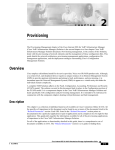

![AD75C20SNJ2 AJ65BT-D75P2-S3-MR-J2[ ]A](http://vs1.manualzilla.com/store/data/006537624_3-ebac58f9411437eb9480ea10c1970d7b-150x150.png)
